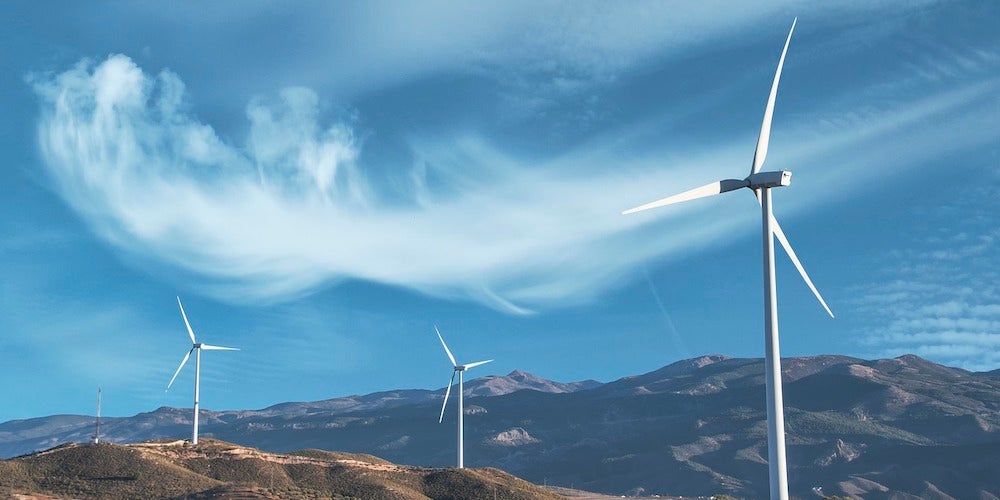With the stated goal of 100% clean energy generation within the United States by 2035, the Biden Administration is setting ambitious, yet necessary targets to address climate change. While it is technically possible to switch from relying mainly on fossil fuels to all-renewable energy, a monumental overhaul of the electricity grid will be needed.
The grid that is currently sending electricity from power plants to homes and businesses was built out beginning in the late 1800’s. It was built for a less populated, pre-climate change, pre-internet connected world. Because of this, the grid is vulnerable to cyber attacks, failure due to strain from the increasing number of natural disasters, and the inability to keep up with increasing demand surges.
The grid is cut up into essentially three major portions - the Eastern Interconnection, the Western Interconnection and the standalone, Texas. This system has outlived its design use because it is not meant to share power outside of its regions, which is one reason why the Texas grid failed so spectacularly in 2021 during a rare winter storm.
The Texas grid is off on its own and could not borrow power from neighbors to sustain its electricity needs. And if 100% clean energy is the goal, an interconnected grid is necessary to reduce the possibility of statewide power outages.
Upgrading the grid will ensure energy is always available
Solar is now the cheapest form of energy and we know that other renewables like wind power are becoming cheaper, as well.
Although renewables are more economical than gas, it is true that they are less reliable because the sun is not always shining and the wind is not always blowing. Additionally, the locations with the most renewable resources are not necessarily the locations that have the highest power demands.
For instance, while the Midwest is a prime location for wind farms, its population is expected to only require 30% of the nation's energy demand by 2050. That wind power can’t go to waste, so an interconnected grid is needed to be able to take that unused energy and transfer it to population centers that need it more.
The map below is an example of where renewable energy can be generated and where the energy will be consumed.
A future grid example utilized to make the most of every location's best renewable energy potential. Image source: Vox.com
Texas will be able to produce more than it consumes through wind and solar power while the Mid-Atlantic region will be consuming slightly more than it can produce. But sharing energy across states, instead of the current segmented grid, will level out the energy disparity.
If the entire country is an energy-generating machine for every state, high-voltage power lines can move energy from place to place so that electricity use can be maximized at the right time for each location.
The U.S. landmass is huge and will benefit from the multiple time zones, and thus varying peak energy times across the country. Peak hours in California can be covered by energy generated during off-peak hours on the East Coast.
For example, non-peak 10pm EST corresponds with the peak PST time of 7pm. Renewable energy generated on the East Coast can be sent to California to help alleviate the burden on their grid during peak power use. Getting the grid to this functionality will take a monumental effort.
To upgrade the grid, a “New Deal” overhaul is needed
Upgrading the grid will lead to thousands of new jobs.
Addressed within the $2 trillion American Jobs Plan, the Biden Administration is calling for building a more resilient electric transmission system and modernizing the power grid. If those policies can be enacted, building out the grid with the ability to run on 100% renewables means construction of new power lines, cables, and renewable energy plants.
Aside from building the grid, it’ll be necessary to build and install solar panels, wind turbines, and electric car charging stations - and storage batteries will need to be manufactured. This offers exciting potential for new, reliable jobs. For example, mining jobs will be in demand, in order to produce the raw materials to power the electric-centric world.
Typically, within the oil and gas industry’s boom and bust cycle, people can lose jobs overnight if the cost of oil goes down. But that won't be the case with renewable energy, since the sun will always shine and power plants or grids will always need maintenance.
Battery storage will play a key role in the grid upgrade
Like we said before, one drawback of renewable energy is that it is a bit more variable and not as “easy” as burning oil whenever you need it. As an example, there is some wasted energy with solar generation because solar panels generate the most energy for your home during the daily hours, when you are less likely to be at home using it.
Because of this, net metering is offered as an incentive in which utility companies pay solar homeowners for their extra energy during the day. But if the entire grid was set up to share any excess renewable energy, that energy can instead be sent automatically to locations that need an extra boost of power.
Alternatively, this extra energy can be sent to massive storage batteries that can then be used during off-peak hours. California has already begun installing battery storage facilities to help reduce the power outages caused by shutoffs meant to prevent wildfires.
Just like installing a battery for a home solar system for use when your panels are not producing energy, storage batteries for entire states can make sure that power is always available even during a windless night.
Policies that will make this transition happen
Luckily, the Biden Administration is moving quickly to make this a reality through the American Jobs Plan. While Executive action might be necessary, an exceptionally high percentage of 63% of Americans approve of a clean energy grid.
In addition to the American Jobs Plan, other policies will need to be implemented to make the big switch to clean energy. The federal tax credit should be expanded and extended beyond 2023, in addition to money and a plan to transition fossil fuel workers to new jobs, coupled with funding to safely close down existing fossil fuel facilities.
The price tag for this transition is definitely steep, but climate inaction is costing an estimated $500 billion a year. Think of the compounding costs of the more intense weather events, from the fires leveling entire cities to the hurricanes routinely flooding towns.
Transitioning to clean electricity won’t stop these from happening, but it will stop them from getting worse. It will give the world time to find a way to remove the excess carbon dioxide from the atmosphere to hopefully reverse these negative climate consequences.
The grid of the future
Within the clean energy future, the way we use the grid will be completely different than the way it is today. By being upgraded and more sophisticated, the grid will be able to act like a “smart grid”, meaning it will take power when it needs it from whatever source can provide it, even your car battery.
Essentially, your entire home can act like a microgrid and be self-sustainable. Though utility-scale renewable energy plants will be necessary, home or business solar-plus-battery storage will play a huge role in the grid of the future.
These storage batteries can capture unused energy and send it to a shared grid, which then allows it to be distributed wherever it is needed - even to a home with no renewable energy at all. Currently, during typical day-to-day energy demand spikes, the system relies on plants called peaker plants that are only activated when extra energy is needed, say on an extremely hot day, or at 6pm after most people are home from work.
With a modernized grid, peaker plants would be obsolete because home and utility storage batteries would be able to provide backup power to the grid for communities in need.
Make the transition happen quicker with solar
Although installing home solar is cheaper now than ever, it is still a high cost for most homeowners. More incentives similar to the federal tax credit and additional subsidies will need to be introduced to get as many homeowners as possible to install solar.
If you are curious about the costs of installing solar on your own roof, you can get in touch with local installers to help you make the switch. The sooner your home becomes its own microgrid, the sooner you will see the cost savings and power-generating benefits.
Key takeaways
- The grid is outdated and needs to be upgraded in order to transfer abundant renewable energy to locations that need power the most.
- Plans to upgrade and modernize the grid are a key part of the American Jobs Plan.
- Home solar panels plus storage batteries will be a large part of modernizing the grid, by providing unused energy as backup power.

